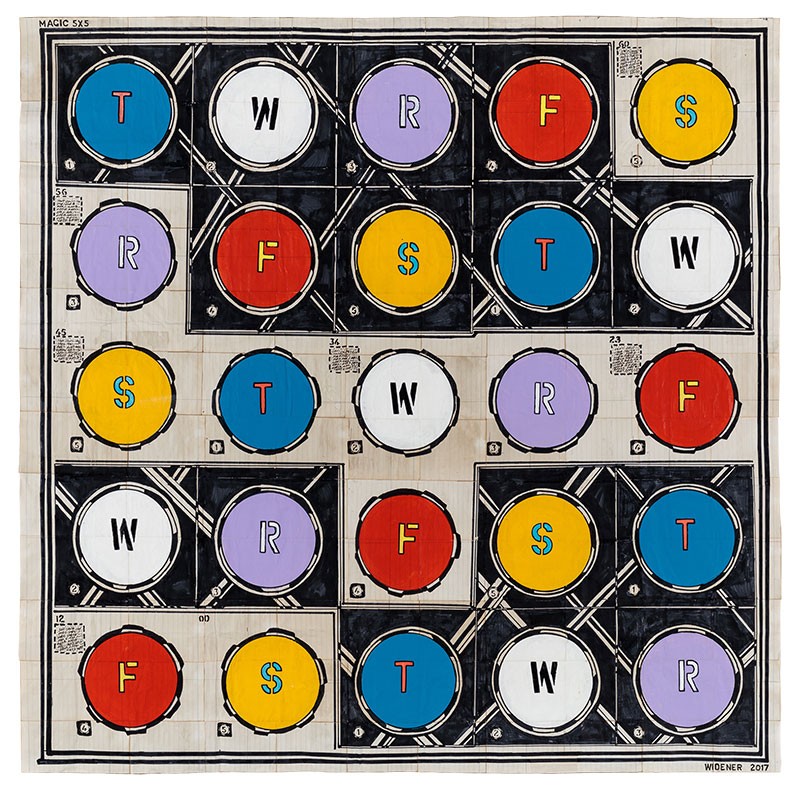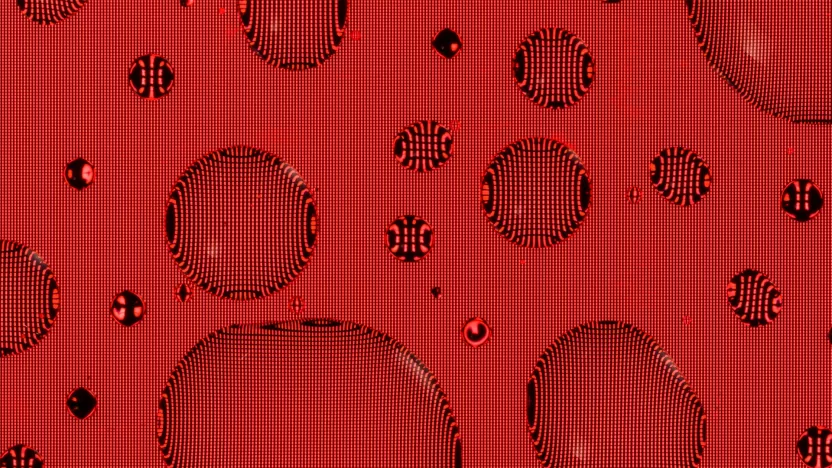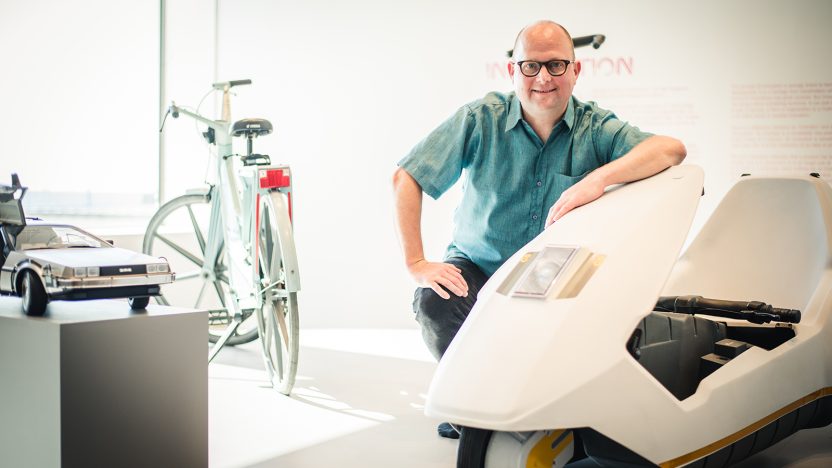The art of calculation
Diagnosed with savant syndrome, this American artist has a super-calculator power, which drives him to obsessively compute.
by Susanna Marchini

George Widener likens himself to a “time traveler” creating mixed-media works that give visible form to complex calculations based on dates and historical events. A self-taught artist, he is highly visible in the contemporary art arena with works in the American Folk Art Museum in New York, the Kroller-Muller Museum in the Netherlands, and the Collection de l’Art Brut in Lausanne, Switzerland.
You have an amazing ability to mentally calculate the days of the week and play with numbers. How did this process start and develop for you?
It all came from my past; I have been able to do it all my life, since I was a child. But in the 1980s, I had some problems, I was by myself, and I was doing it more and more as a pastime to try to make some sense of my world.
How did you realize that you could channel this ability into art?
I think it took some time for me to become creative. As a child, I used to make a list of dates — but I wasn’t being creative with that. I have always loved to draw. Ever since I was a child, I’d draw objects from memory, like trees or cars. As I got older, I became more creative, but still, I didn’t think of it as art.
So what happened then?
From 1986 to 1994, I was what they call an outsider artist — which is somebody doing something for himself without thinking about other people. Things began to change around 2000 when the art dealer Henry Boxer started to exhibit my work in London, and from then on I was in galleries. But I wasn’t trying to show in a gallery or anything like that; they found me.

Do you usually plan the idea behind your artworks, or are your ideas more spontaneous?
I have some ideas and then I’ll have a dream about them, so the answer will come to me in the dream. And then, I will have a dream about some other ideas. Sometimes people are very creative right before they go to sleep, that is when you’re not awake, but also not fully asleep. Ideas come to me in that in-between time. It was more frequent in the past when I didn’t talk a lot with people and I wasn’t social very much, now I have a more balanced life.
Do you have any recurrent subjects that interest you or specific images that catch your attention to create new work?
Memory plays a huge role in my work. With dates, it’s just an inner landscape; to me, it’s like a rhythm or something that I do for myself. But if I happen to see something, then it plays around in my head and I think it has to do with my childhood. I was a late bloomer, I didn’t speak until I was like three or four years old, so at first I had to think in pictures.
In your Titanic series, you have displayed lots of numbers and information related to history. How did you research that project?
Titanic is a historical event but also a very emotional one. I became very interested in it, and it was a way for me to try to express some feelings. I would just collect information through books while some others I have in my memory. I still remember that Titanic is 882.2 feet long—it just sticks in my head.

How much do you think your disorder affected your art?
In my family, there were some cases of autism but some of them had real gifts. I can remember days, but I’m not disabled. I had the chance to meet Kim Peek, he had the best memory of anybody and he could memorize everything he read, but his father had to take care of him until the end. That meeting made me realize that I’m very lucky.
Do you draw every day?
I can’t say that I draw every day but I do have the need to draw. When I was younger, I was obsessed with what to do. I wasn’t doing it for some sort of vocation, I did it because I had to, it just came out of me. I have to draw at least every few days or I start to become anxious or a bit nervous.
Is there a specific meaning behind your artwork?
I believe in the future technology of the singularity, the idea that machines will one day have true human-like intelligence. I like to believe that some of the things that I do will be appreciated.
If someone could look at my work and quickly calculate the thousands of dates and how I move them around and find connections, they might appreciate them like a puzzle or a crossword puzzle.
It seems like there are some calculations within your artwork that cannot be solved right now.
There is a concept in mathematics called the Magic Square, which is simply a four-by-four grid of numbers and it can create an equal sum in all directions. I took that magic square and mixed it with dates, turning it into a magic time square. I believe that future artificial intelligence could do something similar—they will find patterns like that. I can only calculate dates one at a time, but machines with rapid calculation could discover hidden geometrical patterns that could have some meaning or relevance for the future.
In your drawings, could patterns of numbers predict the future?
I played around with this idea with a little bit of humor. Magic squares have been used to make predictions in the past, but only with numbers. I was filling the magic squares with dates for past accidents or floods and then I would have a few that opened to future dates to complete it.

Where do you find your inspiration?
I’m interested in the work of science fiction writer Philip K. Dick. He wrote short stories mostly about floods but the ideas behind them were very interesting and inspired movies like The Matrix, Minority Report, and Blade Runner. I like to try to see my calendars in the same way—not just mathematical but also with mystery and psychology.
How do you envision the society of the future?
I like to be optimistic and think that there will be great technological changes in the distant future. I would like to positively believe that machines are going to see us as parents or that they can live with us. And that many problems can be solved with greater intelligence. But I’m also aware of the other side, the dystopian idea that machines decide they don’t need us or that people are destroying the environment.
Where did you find the inspiration for your time machine?
I originally studied mechanical engineering. I had good grades, but I didn’t finish. I do love machines and their details, I love drawing machines. I was just contemplating that idea of whether or not time travel truly is possible. I haven’t tried to really build a time machine, but I know that time exists in a multi-dimensional way that we can’t comprehend.
If you could travel in the past or the future, where would you go?
I’m a big fan of certain times in the past. Who wouldn’t want to go back to the time of Leonardo da Vinci and shake his hand?
How would you explain the concept of time in your drawings?
My time is dynamic, not static; it’s evolving. For me, dates are continually shifting and I’m always exploring the different ways that they balance, the ways that they are in harmony, the ways that they are opposed to each other. I am continually exploring their similarities and differences.
My work evolves because I choose to listen and to try to write down what I’m seeing in my dreams as well as when I’m awake.


